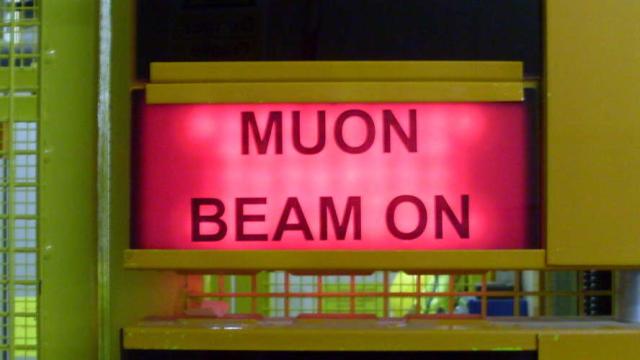The next generation of atom smasher could be a 100-kilometre-round ring, costing over $US10 ($15) billion, with no promise of finding something as glamorous as last decade’s Higgs boson. But does the future of physics need to be so large? What if researchers could probe the secrets of the smallest particles using technology that was, well, smaller?
Scientists have just overcome one of the greatest challenges standing in the way of producing a more efficient kind of particle accelerator, one that would accelerate an unstable particle called a muon. A muon collider could potentially probe a higher-energy frontier, with a smaller footprint and for less money than a city-circling collider based on current technology.
“It seems convincing that a muon collider that can compete with this future hadron collider would be a lot cheaper,” Daniel Kaplan, a particle physicist at the Illinois Institute of Technology, told Gizmodo. Kaplan leads the the consortium of U.S. collaborators on the Muon Ionization Cooling Experiment (MICE).
Particle colliders today look for new subatomic particles, search for new insights into how particles interact with one another, and test theories about how our universe works. They do so by accelerating two classes of particles, either protons and clumps of protons or electrons and their antiparticle, positrons, smashing them together inside of a detector. But these particles have their drawbacks. Protons are composed of sub-structures called quarks, so information is lost on collision, as it’s hard to keep track of what collided with what and caused what end product. Electrons don’t have any known internal structure, but they produce radiation when they change direction, meaning that an efficient electron accelerator must be very straight and long.
Muons solve some of these problems: They’re point particles, like electrons, but they are 200 times more massive and don’t release as much radiation when they change direction.
But muons come with their own problems that make them difficult to work with. They decay into other particles in around 2 microseconds. And the way physicists produce muons—crashing a proton beam into a target to produce muons directly as well as another particle, called a pion, that decays into muons—creates more of a spray of randomly moving particles than a beam. Getting a tightly packed source of muons that’s usable in experiments requires a way to align the spray into a beam before the muons decay.
This week, physicists from the Muon Ionization Cooling Experiment (MICE)
have announced the results of a 20-year-long engineering effort and decades of theoretical work. They successfully created a muon beam using a method called ionization cooling.
Ionization cooling takes the randomly moving muons and passes them through a cooling apparatus. The apparatus consists of 12 superconducting coils that generate magnetic fields, which surround a 22-litre vessel of liquid hydrogen with aluminium “windows” that the muons pass through. The muons then transfer energy to the hydrogen atoms by ionizing them (i.e., knocking electrons off them) and emerge on the other side of the apparatus a collimated beam. Radio-frequency cavities and magnets would then accelerate that beam to the energies required for a physics experiment.
Theoretical physicists first devised the ionization-cooling method in the late 1970s and early 80s, but the challenges were difficult to overcome, explained Chris Rogers, physicist at the STFC Rutherford Appleton Laboratory where the MICE experiment was carried out.
“It’s a massive engineering challenge [given] the kinds of magnetic fields we needed to generate,” Rogers said. It wasn’t until the early 2000s that physicists actually considered constructing the device. Part of what motivated them was the increased interest in neutrinos, a kind of subatomic particle that barely interacts with matter but is the subject of some of physicists’ most pressing questions today. Muons decay into neutrinos, so a muon beam in turn could be useful as a neutrino beam.
MICE researchers began taking data in 2012, finished taking data in 2017, analysed the data for two years. Their analysis measured the beam before and after the cooling system, demonstrating that the system had the intended effect and really did remove the random motion of the muons, according to the paper published in Nature.
Other physicists who were not involved in MICE were excited about this experimental tour de force. “I’m really glad to see this,” Heidi Schellman, particle physicist at Oregon State University, told Gizmodo. She was especially impressed by their ability to harness such powerful magnets, which can quench if not controlled properly, causing damage to equipment. Schellman said she was excited to see this technology’s potential applications in neutrino science.
Cooling the beam was perhaps the main challenge in the way of realising a muon accelerator. Now, physicists can look to design more cost-efficient colliders based on the designs. But the discovery is exciting on its own. “What excites me most is the new capability we have,” Rogers said. “What we showed is that we can now prepare a new particle for acceleration.”
Particle accelerators are already used in physics experiments, medicine, and other applications. Maybe these muons will allow for applications that physicists haven’t thought of yet.
